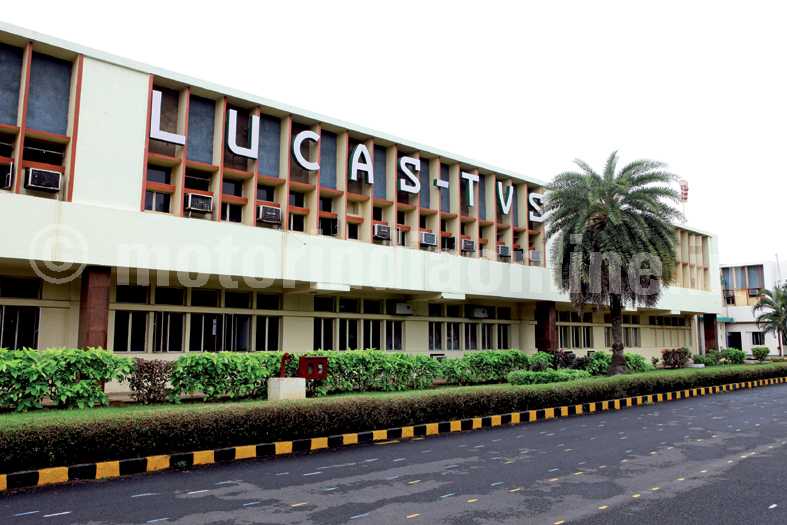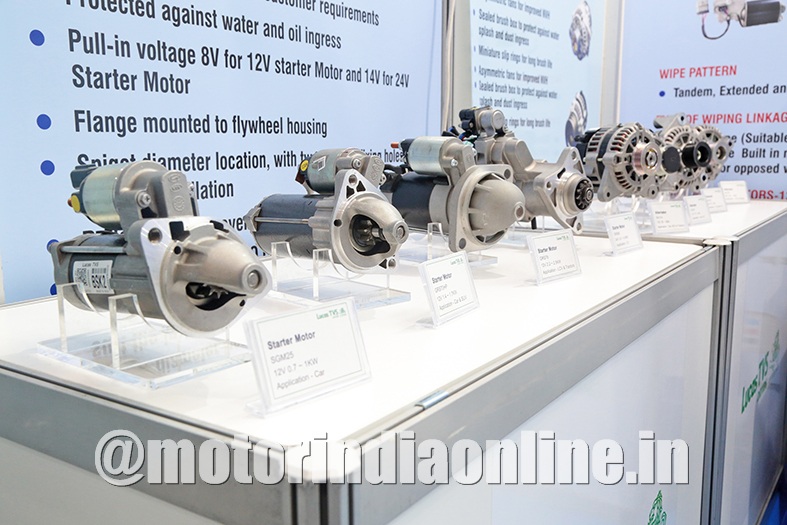In an extensive interaction, N. Balasubramanian poses in-depth questions to Arvind Balaji, Joint MD, Lucas TVS and finds out his strong bullish sentiment towards the market, how the company is building up on their EV and aftermarket business, besides being positive about the central government’s supportive reforms and steps to encourage the automotive industry in India.

Here are the excerpts:
What has been the impact of the pandemic on your business and what are the takeaways for you?
The three waves of pandemic have forced us to introspect deeply as perhaps most businesses have. During this time, we have faced unprecedented fluctuations in demand, steep increase in the prices of all raw materials, global chip shortages, record freight prices and container shortage, all while the move to electric vehicles has been accelerating.
Learning to handle these challenges has taught us many valuable lessons that I believe will be very useful to make us a stronger more robust company. We have used the time to reorganise our company to become nimbler and more flexible while expanding our business outside our core IC engine product lines. During the pandemic we were able to install and commission several high-volume production lines, launch EV products, expand our product offering to the consumer segment and the like.
We also signed a major agreement with a cutting-edge technology partner, 24M, to make lithium-ion cells in the country. We believe this technology has tremendous potential in India and around the world and we are excited to bring this new technology to serve our customers.
In all, I think we have to get used to this new normal. We at Lucas-TVS are excited at the opportunities that are emerging.
Lucas TVS has been quite active in the EV domain. Tell us more about this business of yours and what the foreseeable future looks like. We would also like to learn more about your partnership with 24M Technologies.
In the last 4-5 years, we have had a keen focus on the EV segment. We have already developed products and launched e-rickshaws, and 2-wheelers. We have also invested in 2 manufacturing lines in our Pondicherry plant to make traction motors. We are exporting an electronic controller to a European customer for EVs. Today our product range for traction motors includes both centre drive motors and hub motors. Through our subsidiary company we also manufacture DC-DC converter and other electronics for EVs.

Though our core business is IC engines, our strength is in the area of mechatronics. And that is why traction motor control electronics is a logical adjacency. We have developed motors for other automotive applications like steering, braking, suspension, and comfort. As we looked at energy efficiency, battery was again a logical adjacency.
24M Technologies’ proprietary technology, called SemiSolid cell manufacturing, is a simple yet advanced manufacturing process of making lithium-ion cells. It is a low cost, high-energy density, reliable and safe method. We believe it to be a resilient technology for India and that is why we have tied up with them. Our plan is to enter a pilot phase initially and the magnitude of it depends on the consumer demand and PLI scheme. The government clearly recognizes and is talking about the new automotive PLI while focusing on new technologies, their localization and incentivizing the industry to create a new automotive ecosystem.
What would be the top 3 aspects that every supplier in India must focus on right now, according to you, and why?
With the EV ecosystem coming in, every aspect of the industry is getting redefined, in terms of what the customers and the suppliers will do. The solution lies in ‘self-innovation’ for the Indian industry. Beyond the cost, Indian industry must now spend time thinking about how to make products as good as the rest of the world, technology wise. That will be the key differentiator going forward. Indian industry needs to focus much more now on R&D, product development and developing the technology within the country. From Lucas TVS perspective, we have been focusing on this for long and now we have accelerated it and have also expanded our R&D facilities. We are similarly focusing on expanding our capabilities, investing specifically in embedded software because that is the future.

What is the scenario on the exports front?
Our traditional markets, Europe and US, have shown us good traction in exports. Even though we are not a typically export-oriented company, we have invested well in expanding our customer base outside India in the last few years. In 2021, our exports were 16-17% of the turnover. We are seeing a happy trend in our export business. We have also acquired new automotive and EV customers. And EV has its own separate business segment in our company now.
How does the PLI scheme help Indian suppliers reach out farther from a global perspective and also strengthen the local manufacturing?
Encouraging localization will automatically enable the indigenization of the technology and more capabilities will develop in the country. As the new ecosystem gets built in India, we will need volumes which is what the government is trying to do. Hopefully in the near future more local capability of the domestic market is built up resulting in improved competencies, which can give the industry the confidence to export too.
How is your aftermarket business doing?
Aftermarket was impacted just as badly as the OE business because stores were closed, vehicle transportation was lower and so was the demand. But we used the time to reach out to our mechanics, distributors, dealers, retailers and customers and understand the market needs. Our aftermarket has rebound strongly and we have gained more presence in the market. We are enthusiastic about the aftermarket potential going forward.

What sort of disruption do you think digital retail brings in? And how are you prepared for it?
We are an aftermarket company because of our OE presence. We are making investments, trying to shorten the supply chain, and reach out digitally to connect to all our stakeholders. Disruption will definitely happen and shorten the supply chain. What needs to be seen is if consumers will buy directly or go through the mechanics. Globally, digital retail has been the trend of change for some time, and a strong independent aftermarket is available in the US and Europe. That structure may not see dramatic changes. I would say let it pan out.
What is your outlook for the medium to long term future for the Indian auto and auto component industry? And what do you see as the major growth drivers for the industry?
Market is quite bullish, and one leg of growth is when demand comes back to normal post COVID. Today, people are looking for an alternative to China, so that would also drive demand in India. Another point is that our government is going in the right direction by way of actively incentivizing and encouraging manufacturing in a big way. Now, it is up to the industry to maximize the opportunity coming our way.
Have you planned on any additional capex? And what are your targets for the upcoming financial year?
We will continue to invest Rs. 150 crores annually over the next few years as we expand our capacities and launch our new product lines.